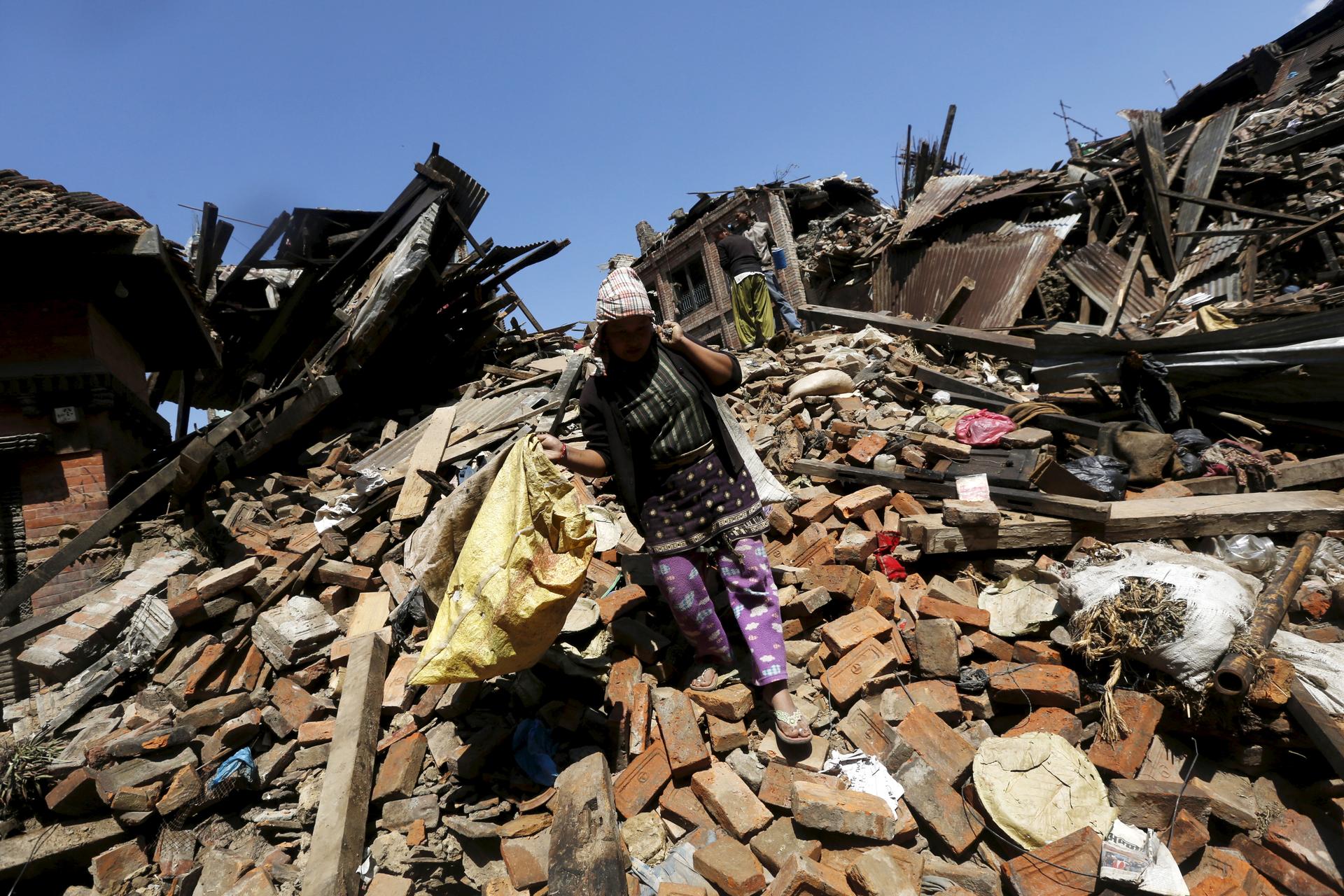A woman carries her belongings as she walks over a collapsed house in Bhaktapur, Nepal, on April 27, 2015.
Scientists and experts have long agreed that Nepal was due for a large earthquake. The entire country rests on a fault zone, and the country's last major quake was just over eight decades ago. Yet the country's preparedness has lagged far behind the threat.
“There are everyday worries that people have about terrible traffic, air pollution, air quality, food quality, water quality, let alone just poverty," says James Jackson, the head of the earth science department at England's Cambridge University. "These things dominate your life. … Yes, they’re aware of earthquakes, but the earthquake threat by comparison seems rather remote compared to these daily worries people have."
Jackson was in Kathmandu less than a week ago to discuss earthquake preparedness in the region, and he points out that several Nepali organizations were in fact trying hard to ready the public for the next big quake. They do so "by educating the public, trying to train masons and builders in the details of the construction, which can make all the difference as to whether something is safe or not," he says. "It’s not as if people were doing nothing."
But such efforts simply can't keep pace with the explosive growth of the country's population, especially in the capital of Kathmandu. “The population’s increased hugely, there’s a great pressure on space," Jackson says. "A lot of the buildings were put up rather hurriedly without much thought about earthquake resistance in their construction … so everyone knew that Kathmandu is not in a good position."
Despite the devastation and high death toll, which Nepalese officials now say is above 4,000, it might have been even worse. “My first reaction, actually, was thank goodness it was only [magnitude] 7.8 or 7.9, because it could have been much larger," says Roger Bilham, a professor of geological science at the University of Colorado, Boulder.
The fault on which Nepal lies is created by the Indian sub-continent's slow move northward — and under — the Tibetan plateau. Those plates are also unusual in that they're horizontal, which creates much higher risks than vertical plates like the ones under California.
Yet people in the area can't help but live in the flat, vulnerable parts of the region, Jackson points out. In such mountainous territory, the most dangerous areas are the only ones fit for human habitation.
And the danger is far from over. In addition to the large aftershocks that have hit Nepal in the days after the first earthquake, Bilham says other areas of the Himalayas are also long overdue for major quakes. Bhutan and the Indian regions of Sikkim and Indian-administered Kashmir in particular are storing up huge amounts of pressure, he says.
"We know from GPS measurements in these locations that the spring is being wound-up," Bilham says. "There is no avoiding a future earthquake. It’s going to happen.”
For now, both men hope that Saturday's quake will serve as a wake-up call — and that the next region to be hit will be prepared in time.
oembed://https%3A//www.youtube.com/watch%3Fv%3Dm1RHQhvziB0%26feature%3Dyoutu.be
